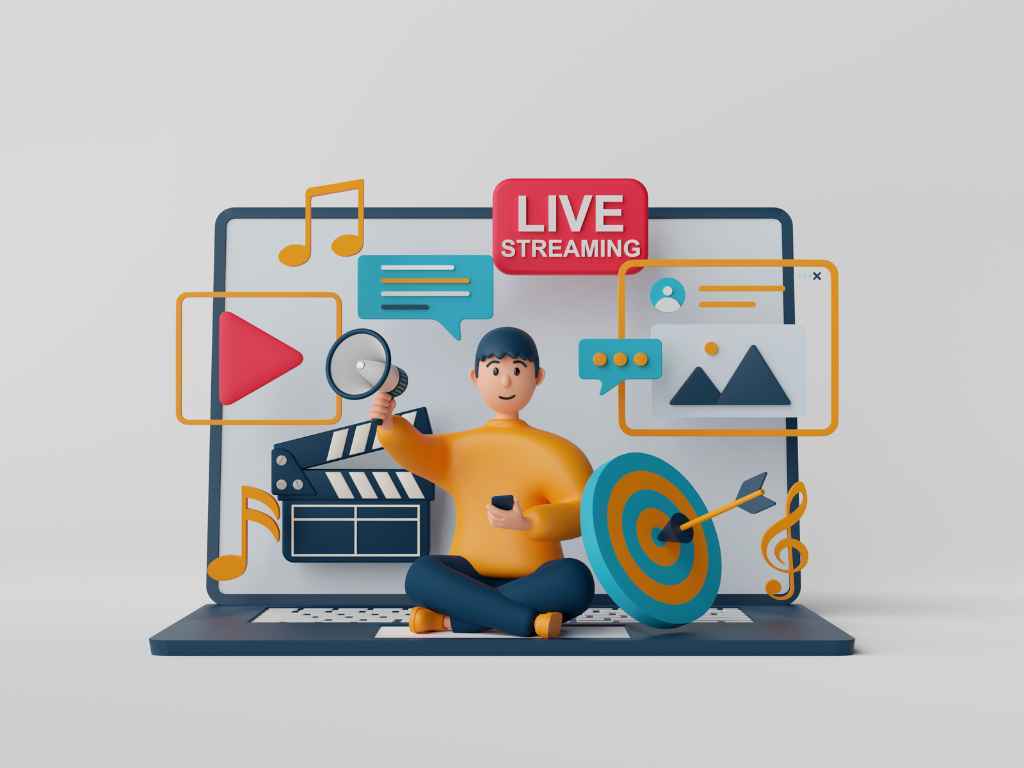Have you ever wondered why some affiliate marketing websites seem to attract visitors as effortlessly as bees to honey, while others struggle to catch even a fleeting glance from the digital passersby? If you’re reading this, chances are you’re trying to unlock the secret to getting traffic to your affiliate marketing website. And let me tell you, you’re not alone in this journey.
The web is a vast ocean, and making your island visible is no small feat. But why is it that despite having a sleek design, top-notch affiliate products, and a passion that burns brighter than a thousand suns, your website traffic meter still looks a bit… lonely?
The truth is, getting traffic to your affiliate marketing website isn’t just about opening your digital doors and waiting for visitors to stroll in. It’s about understanding the why and the how—why they aren’t coming and how you can turn that around. In this journey, we’re not just looking for any traffic; we’re pursuing the right kind of traffic. Those who land on your site, stay, engage, and believe in what you have to offer. It’s about creating connections, offering value, and yes, a bit of behind-the-scenes magic with SEO, content quality, and social media prowess.
In this blog post, we’re diving deep into the heart of the issue. We’ll explore the common pitfalls that might be keeping visitors away from your affiliate marketing website and arm you with practical, actionable strategies to not just attract traffic, but captivate it. Whether you’re a seasoned affiliate marketer or just starting, understanding the nuances of traffic generation can transform your website from a ghost town to a bustling marketplace.
So, grab your explorer’s hat, and let’s embark on this adventure together.
Table of Contents
Diagnosing Your Affiliate Website Traffic Problems

Getting traffic to your affiliate marketing website can sometimes feel like trying to solve a puzzle with missing pieces. You’re putting in the effort, but the results just don’t seem to add up. The first step to solving this mystery? Identifying where the gaps lie.
Let’s start peeling back the layers and see what might be holding your site back from becoming the traffic magnet you envision it to be.
Lack of Clear E-E-A-T Signals

In the world of affiliate marketing, your reputation is your currency. Google and other search engines use E-E-A-T (Expertise, Authoritativeness, Trustworthiness, and Experience) as a yardstick to measure the value and reliability of your website. If your site isn’t radiating these signals at every turn, both search engines and potential visitors might just pass you by.
But what does it really mean to showcase your E-E-A-T? Imagine walking into a store where the staff knows their products inside out, the brand is well-respected, and you feel secure in your purchases. That’s the vibe you want your website to emit. This involves creating content that showcases your deep knowledge, linking to reputable sources, and ensuring your site is a fortress of security and privacy. Without these signals, your site may struggle to gain the visibility and credibility it desperately needs.
| Action | Expected Outcome | Implementation Tips |
|---|---|---|
| Produce in-depth content | Establishes your website as an authority on specific topics, improving search engine rankings. | Focus on long-form articles that cover topics comprehensively. |
| Secure your website | Increases visitor trust and search engine ranking. | Implement HTTPS and regularly update security protocols. |
| Garner quality backlinks | Enhances your site's authoritativeness through association. | Reach out for guest blogging opportunities and engage with industry leaders. |
| Showcase credentials and real-world experience | Boosts perceived expertise and trustworthiness. | Include author bios with qualifications and professional experiences relevant to the content. |
| Regularly update content | Keeps information relevant and trustworthy, maintaining visitor and search engine trust. | Conduct periodic reviews of your content, updating statistics, and references to ensure accuracy and timeliness. |
Unrealistic Expectations for Traffic Growth

[Unrealistic Expectations]
We’ve all heard the tales of websites and videos that go viral overnight, racking up thousands of visitors like it’s a walk in the park. While it’s natural to dream of such success, banking on viral hits or expecting instant traffic spikes can set you up for disappointment. Sustainable traffic growth is more marathon than sprint.
Setting realistic expectations is crucial. Understand that building a loyal audience takes time, consistency, and patience. Instead of aiming for the stars right out of the gate, focus on small, achievable goals that incrementally increase your site’s traffic. This could mean targeting specific keywords, gradually improving your site’s SEO, or increasing your social media presence piece by piece. The key is to lay down a strategic foundation and build upon it steadily, rather than chasing after quick fixes that don’t promise long-term success.
| Milestone | Expected Timeline | Key Strategies |
|---|---|---|
| Initial traffic increase | 1-3 months | SEO optimization, social media engagement, content consistency. |
| Consistent audience growth | 3-6 months | Regular content updates, expanded keyword targeting, increased backlinking efforts. |
| Established traffic patterns | 6-12 months | Strategic content marketing, influencer collaborations, enhanced user experience. |
| Sustained growth and engagement | 12+ months | Continuous SEO improvements, community building, advanced analytics to refine strategy. |
Related Post: Optimizing Your Affiliate Website For Search Engines
The Foundation of Attracting Traffic: Quality Content

Ah, content—the king of the digital realm, the heart of your online presence, and the cornerstone of any successful affiliate marketing strategy. But not just any content. We’re talking about high-quality, engaging, informative content that speaks directly to your audience’s needs, questions, and pain points. Let’s dive into why quality content is non-negotiable and how aligning it with your audience’s search intent can transform your traffic stats.
The Consequences of Neglecting Content Quality

Imagine walking into two different stores. One is well organised, with products neatly displayed and helpful information at every turn. The other? A cluttered mess, with items thrown haphazardly on shelves and no one in sight to help you find what you need. Which store would you spend more time in? The answer’s pretty obvious, and the same logic applies to your website.
Content that lacks depth, clarity, or relevance is like that cluttered store. It repels visitors, increases bounce rates, and sends a clear message to search engines that your site might not be the best source of information. High-quality content, on the other hand, is your best tool for engaging users, reducing bounce rates, and signalling to search engines that your website is a valuable resource worth ranking highly.
| Quality Aspect | Why It Matters | How to Improve |
|---|---|---|
| Depth and Relevance | Ensures content meets the user's search intent, improving engagement and SEO rankings. | Research and address the comprehensive needs of your topic, including FAQs and related queries. |
| Clarity and Readability | Makes content accessible and enjoyable for a wider audience, reducing bounce rates. | Use subheadings, bullet points, and short paragraphs. Aim for a conversational tone that's easy to understand. |
| Originality | Distinguishes your content from competitors, offering unique value to your audience. | Include original insights, personal experiences, or exclusive data that readers can't find elsewhere. |
| Visual Appeal | Enhances user experience and engagement, making content more shareable. | Incorporate high-quality images, infographics, and videos relevant to the content. |
| Actionable Tips | Converts readers into followers or customers by providing clear next steps. | End each piece of content with a clear CTA, guiding readers on what to do next with the information they've gained. |
Misalignment with Audience Needs

Creating content without a deep understanding of your audience is like shooting arrows in the dark. Sure, you might hit something occasionally, but the chances of hitting your target are slim. To draw the right traffic to your affiliate marketing website, you need to align your content with the specific needs, questions, and interests of your audience.
This alignment starts with thorough audience research. Who are they? What problems are they trying to solve? What kind of information are they searching for? Once you have a clear picture of your audience, you can create content that answers their questions, solves their problems, and guides them toward the solutions you offer—your affiliate products.
Crafting content that resonates with your audience not only boosts your site’s traffic but also builds trust and authority, making visitors more likely to return, engage with your content, and click on your affiliate links.
| Strategy | Purpose | Implementation Tips |
|---|---|---|
| Audience Research | Identifies the interests, problems, and questions of your target audience. | Use tools like Google Analytics, social media listening, and surveys to gather insights about your audience. |
| Keyword Research | Ensures content is discoverable by matching the search queries of your audience. | Utilize keyword research tools to find long-tail keywords that align with user intent and incorporate them naturally into your content. |
| Content Personalization | Increases relevance and engagement by tailoring content to different segments of your audience. | Segment your audience based on demographics, interests, or behavior and create content that caters to each segment's needs. |
| Feedback Loop | Continuously improves content quality and relevance based on audience feedback. | Encourage and monitor comments on your website and social media, using feedback to refine and target your content more effectively. |
| Competitor Analysis | Identifies gaps in your content strategy and opportunities for differentiation. | Analyze the content of direct competitors to find topics they are missing or not covering adequately and fill those gaps with your content. |
Related Post: Affiliate Marketing Content Marketing Strategies
Optimising for Search Engines and Humans

In the quest to drive traffic to your affiliate marketing website, there’s a fine line between crafting content for search engines and creating an experience that delights and retains human visitors. Striking the perfect balance between these two is crucial. Let’s break down how you can optimize your website to attract more traffic while ensuring a positive user experience.
Balancing SEO and Readability

SEO isn’t just about pleasing search engines; it’s about reaching people. The art of SEO is creating content that ranks well and also resonates with your audience. This means using keywords naturally, writing compelling meta descriptions, and ensuring your content is easy to read and engaging.
Think of your keywords as the map that guides search engines to your content, but once visitors arrive, it’s the quality of your content that keeps them there. Tools like Yoast SEO can help ensure your content is optimised for both search engines and human readers, suggesting improvements for readability and SEO best practices.
The Role of Keyword Research and On-Page SEO

Keyword research is the cornerstone of SEO. It’s how you discover what your target audience is searching for so you can tailor your content to meet those needs. Use tools like Google’s Keyword Planner or Jaaxy to find relevant, high-traffic keywords with low competition.
Once you’ve identified your keywords, incorporate them into your content, titles, and meta descriptions. Remember, the goal is to include these keywords naturally. Stuffing your content with keywords not only makes it difficult to read but can also penalise your site’s search rankings.
Enhancing Your Site's Authority with Off-Page SEO

Off-page SEO involves activities outside of your website that improve your site’s ranking in search engine results pages (SERPs). The most significant factor here is backlinks — links from other websites to yours. These act as votes of confidence from one site to another, telling search engines that your content is valuable and trustworthy.
Focus on building backlinks from reputable sites in your niche. Guest blogging, collaborating with influencers, and creating shareable content are effective strategies for earning quality backlinks.
The Importance of Technical SEO and UX

Technical SEO covers the aspects of your site that impact its visibility in search engines, such as site speed, mobile-friendliness, and secure connections (HTTPS). These factors not only affect your search engine rankings but also your users’ experience on your site.
User experience (UX) is equally important. A site that’s easy to navigate, loads quickly, and is visually appealing can significantly reduce bounce rates and improve engagement. Use Google’s PageSpeed Insights and Mobile-Friendly Test to evaluate and enhance your site’s performance and usability.
For those looking to deepen their understanding of SEO and explore further strategies to improve their website’s search engine ranking, Moz’s Beginner’s Guide to SEO is an invaluable resource.
Related Post: How to Track & Analyze Affiliate Marketing Metrics
The Ultimate Affiliate Marketing Guide: Sign Up Now for Exclusive Tips and Strategies!
Leveraging Social Media to Broaden Your Reach

In today’s digital landscape, social media is a powerhouse for boosting website traffic. It’s not just a place for social interactions but a dynamic platform for marketers to extend their reach and draw audiences to their websites. Here’s how you can make the most of social media to increase traffic to your affiliate marketing website.
Choosing the Right Platforms for Your Audience

Not all social media platforms will be right for your brand or audience. The key is to identify where your target audience spends their time and focus your efforts there. For instance, if your content is highly visual, Instagram and Pinterest might be your best bets. For B2B marketing, LinkedIn could be more appropriate. Use analytics tools to understand where your engagement is highest and concentrate your marketing efforts on these platforms.
Creating Shareable, Engaging Content

Content that gets shared on social media expands your reach exponentially. But what makes content shareable? It’s not just about promoting your products or services. Shareable content often educates, entertains, or inspires. Think tutorials, insightful articles, compelling infographics, or relatable stories. Always aim to add value to your audience with each post, and don’t forget to include visually appealing images or videos to complement your content.
Consistency is Key

Maintaining a consistent posting schedule keeps your audience engaged and helps you stay on their radar. Tools like Buffer or Hootsuite can help you plan and schedule your posts in advance, ensuring a steady stream of content without requiring daily manual updates. Remember, consistency doesn’t mean bombarding your followers with too much content; it’s about finding the right balance that keeps your audience interested and engaged.
Engage with Your Audience

Social media is a two-way street. It’s not just about broadcasting your message but also listening and responding. Engage with your audience by replying to comments, participating in discussions, and even asking for their opinions or feedback. This engagement builds a community around your brand, fosters trust, and can significantly increase the likelihood of your content being shared.
Analytics: Measure What Matters

To understand what’s working (and what isn’t), dive into your social media analytics. Most platforms offer insights into post engagement, reach, and audience demographics. Use this data to refine your strategy, focusing on the types of content that resonate most with your audience. Tracking clicks to your website from social media posts can also inform your content strategy and highlight which platforms are driving the most traffic.
Related Post: Using Social Media for Affiliate Marketing
Building Partnerships and Utilising Guest Posts

In the digital world, who you know can be just as important as what you know. Building robust relationships within your niche can open up opportunities for collaboration that extend your reach and enhance your site’s credibility.
Here’s how to leverage partnerships and guest posting to drive more traffic.
Networking with Industry Leaders and Influencers

Creating a network with other bloggers, influencers, and businesses within your niche can lead to mutually beneficial collaborations. These partnerships might involve co-creating content, sharing each other’s posts, or even joint webinars and live events. Such collaborations allow you to tap into each other’s audiences, significantly increasing your exposure.
Start by engaging with industry leaders on social media, commenting on their blogs, or attending niche-related events. Genuine engagement can foster relationships that lead to meaningful collaborations.
The Strategic Power of Guest Posting

Guest posting is a proven strategy to reach wider audiences and build backlinks to your website, which is crucial for SEO. By publishing articles on reputable sites within your niche, you not only get your brand in front of new eyes but also establish yourself as an authority in your field.
When selecting sites for guest posting, look for those with a strong readership and relevance to your niche. Your guest posts should offer valuable insights or solutions to the audience, not just serve as promotional pieces for your site.
Tips for Effective Guest Posting
- Offer Value: Your guest post should be informative, engaging, and valuable to the audience of the host site.
- Align with the Host’s Style: Tailor your content to match the tone and style of the host site for a seamless fit.
- Include a Call to Action: While overt self-promotion is often frowned upon, including a subtle call to action or a link back to a relevant article on your site is generally acceptable and beneficial.
- Follow Up: After your guest post goes live, promote it through your channels, engage with comments, and maintain the relationship with the host for future opportunities.
Leveraging Partnerships for Content Promotion

Beyond guest posting, consider other creative ways to collaborate with your network. This could involve exchanging newsletter mentions, conducting interviews with industry experts, or creating collaborative content that combines your strengths and insights.
Related Post: Understanding Affiliate Program Commission Structures
Turn Your Passion into Profits
Monitoring, Analysing, and Adapting Your Strategy

The digital landscape is always evolving, and so are the behaviours and preferences of your audience. By keeping a close eye on your website’s performance and being willing to adjust your strategies accordingly, you can stay ahead of the curve and keep your traffic growing.
Here’s how to make analytics work for you.
The Importance of Regular Traffic Analysis

Regularly reviewing your website’s analytics is essential for understanding how visitors interact with your site. Tools like Google Analytics offer a wealth of data, including which pages are most popular, how long visitors stay on your site, and where your traffic is coming from. This information is invaluable for identifying successful elements of your strategy as well as areas for improvement.
Key Metrics to Monitor:
- Visitor numbers: Are they growing over time?
- Traffic sources: Where is your traffic coming from, and which sources are most valuable?
- Bounce rate: Are visitors engaging with your content, or leaving quickly?
- Conversion rate: How effectively are you turning visitors into leads or customers?
Adapting Based on Performance Data

With a clear understanding of your website’s performance, you can begin to make informed decisions about how to adjust your strategy. If certain types of content are consistently popular, consider creating more on those topics. If social media is a significant traffic source, invest more effort in those platforms. Always be ready to pivot based on what the data tells you.
Steps for Adaptation:
- Identify underperforming areas: Use data to pinpoint aspects of your strategy that aren’t working as well as expected.
- Test changes: Implement targeted changes aimed at improving performance in those areas.
- Monitor results: Keep a close eye on how those changes impact your site’s performance.
- Refine and repeat: Based on the results, further refine your approach and continue the cycle of improvement.
Embracing Change for Long-term Success

The willingness to adapt based on analytics is what separates successful affiliate marketing sites from the rest. Digital marketing is not a set-it-and-forget-it endeavour; it’s a dynamic process that requires ongoing attention and adjustment. Embrace change as an opportunity to learn, grow, and better serve your audience.
Related Post: Strategies To Increase Affiliate Marketing Earnings
Bringing It All Together: Your Path to Increased Traffic

And there we have it—a journey through the intricate dance of driving traffic to your affiliate marketing website. From the foundational necessity of crafting quality content that resonates with your audience, to the nuanced art of SEO, the dynamic world of social media, the power of partnerships and guest posts, and the critical importance of analytics for continuous adaptation, it’s clear that increasing traffic is not a one-time effort but a continuous endeavour.
We explored how balancing SEO with readability makes your content both findable and enjoyable. We delved into the importance of choosing the right social media platforms and engaging genuinely with your audience. We discussed building relationships through networking and the strategic advantages of guest posting. And finally, we emphasised the need to monitor, analyse, and adapt based on performance data to ensure your strategy remains effective and your traffic continues to grow.
Remember, the digital landscape is always evolving, and so should your strategies. It’s about being proactive, willing to experiment, and learning from both successes and setbacks. Your website is not just a static entity but a living, breathing extension of your brand and your passion. Treat it as such, and you’ll find that driving traffic is not just about numbers, but about creating a community and providing value that resonates with your audience.
Now, I’d love to hear from you! Which of these strategies have you found most effective in driving traffic to your site? Are there any challenges you’ve faced that we didn’t cover? Share your experiences, questions, or tips in the comments below. Let’s keep the conversation going and create a space for learning and growth together.






